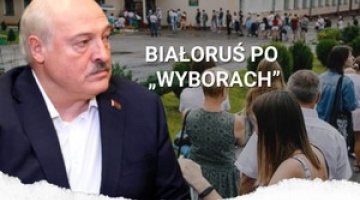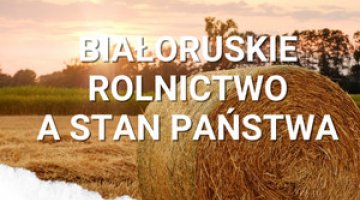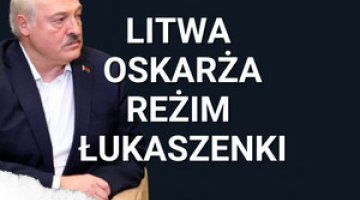Eradicating Polishness. Lukashenka on the Polish national minority schools in Belarus

The Polish national minority school system in Belarus was created from scratch in the 1990s with financial support from Warsaw and an organisational effort of the Polish minority in Belarus. Although in its first years it developed relatively smoothly, since 2005 Polish schools have been under constant pressure from the local and central authorities. The goal of this pressure is unchanging – it involves the Russification (or, less frequently, Belarusianisation) of the young generation of ethnic Poles living in Belarus. In addition, hostile actions were carried out during spells of the political thaw in Polish-Belarusian relations (most recently in 2016–2020), which saw a major development of economic and investment cooperation and numerous high-level visits. However, the most severe blow to the Polish school network occurred in March 2021. This should be viewed both in the broader context – as an element of the wave of repression against civil society following the 2020 presidential election, and in a narrower context – as another blow to the Polish minority. One manifestation of this has been the arrest of the leaders of the Union of Poles in Belarus (UPB) and of the principal of a Polish community school in Brest. Alongside this, the prosecutor's office has launched a series of inspections in other Polish minority organisations across Belarus and in privately-owned schools offering Polish language courses. This campaign suggests that a plan approved by President Alyaksandr Lukashenka is being implemented to undermine independent Polish organisations in Belarus and ultimately destroy the Polish national minority school system.
The beginnings of the Polish national minority schools in Belarus
The Polish-Belarusian treaty on a good neighbourhood, friendly relations and cooperation, signed in 1992, formed the legal basis for the establishment of Polish schooling and educational associations in Belarus. As a consequence, due to the relatively favorable attitude of the Belarusian leadership, Polish minority activists began to organise Polish language classes, mainly in the Hrodna region, which, according to the 2019 census, is inhabited by 223,000 ethnic Poles (287,000 ethnic Poles live in Belarus as a whole). Their efforts resulted in a constant increase in the number of young people learning Polish and attending schools with Polish as the language of instruction (mainly state schools). Whereas in the 1988/1989 school year there were a mere 1,000 such individuals, a decade later, i.e. in the 1998/1999 school year, their number exceeded 19,000, and in 2004 it was 22,000.[1]
Aside from the state school system, classes were also offered by community schools run by the Polish minority (in particular the Union of Poles in Belarus and the Polish Educational Society), activity clubs and selected kindergartens. In addition, based on international agreements, two schools with Polish as the language of instruction were opened – in 1996 secondary school no. 36 was opened in Hrodna, and in 1999 – secondary school no. 8 in Vawkavysk. Their construction and equipment was fully funded from the Polish state budget. These schools continue to be the only state schools in Belarus with Polish as the language of instruction.
The dismantling of the UPB and the first attempts to curb the activity of Polish schools
In 2005, when making preparations for his re-election and in an attempt to divert society’s attention from domestic problems and to consolidate his supporters, Lukashenka triggered a crisis in Polish-Belarusian relations. The regime accused Warsaw of intending to destabilise Belarus and targeted the UPB, which resulted in a rift in this organisation. The Belarusian leadership’s intention was to seize control of the UPB which at that time – with its more than 20,000 members – was Belarus’s largest organisation and one of the most dynamic. This decision resulted from a more comprehensive strategy intended to curb the independence of the third sector. As a consequence, a new UPB was formed – one that is legal in accordance with Belarusian law and strictly controlled by the Belarusian leadership. Alongside this, another union of the same name was established – one that is tolerated by the Belarusian government despite the fact that it operates outside the Belarusian legal system (it has not been registered). It is backed by Warsaw and is headed by Anzhalika Borys.
Acts of repression targeting the members of the illegal UPB were accompanied by attempts to curb the activity of Polish schools which enjoyed support from Poland. The regime in Minsk viewed these schools as an element of Poland’s soft power in Belarus and a base for carrying out “anti-state” activity. The following years saw a consolidation in both schools of standards based on Soviet patterns which were common in the Belarusian state school system (in which curricula contain excessive amounts of theoretical content and, in the case of humanities, clearly ideological content). Alongside this, the use of the Polish language in teaching practice was severely limited. This was due both to the low level of competence on the part of the teaching staff (the process of hiring teachers from Poland was disrupted) and to the lack of access to modern, appealing Polish textbooks for young people (as these were not approved by the Belarusian education office). As a consequence, these schools continue to mainly use textbooks published in Belarus in the 1990s, which do not meet the standards of contemporary education. In addition, in the case of science, the only language of instruction is Russian. The principals of these schools are under pressure from the state education office. As a consequence, they have been reluctant to contact the activists of Anzhalika Borys’s UPB and Polish consuls.
Repression despite political dialogue
Over the last decade, which included two spells of political dialogue between Minsk and Warsaw (2008–2010 and 2016–2020), the Belarusian government have launched intensive measures to reduce the access of children to education in Polish as the language of instruction. The repression targeted all the forms of education that were available.
Since at least 2015 the authorities of Hrodna oblast have imposed limits regarding enrolment in first grade at both schools regardless of the fact that the number of potential attendees (i.e. children whose parents applied for admission) has regularly exceeded the number of places available. In Vawkavysk, in the 2018/2019 school year, the only first grade opened at that time had 18 places, and 25 applications had been submitted. This was despite the fact that, pursuant to the Belarusian constitution, national minorities are guaranteed free access to education in their native language. Usually, the number of places available was only increased due to pressure from the Polish embassy or representatives of the Polish leadership (e.g. the Speaker of the Senate in June 2019).
Alongside this, efforts to limit the number of instances in which Polish can be taught as an additional language in schools of all types have been on the rise. While Russian is increasingly becoming the dominant language of instruction in state schools, Belarusian has de facto become the optional language and Polish has been phased out almost completely. Frequently, it is not even possible to teach Polish as part of free extracurricular classes. The practice of collecting additional fees for attending Polish classes makes these classes less available for children of less affluent parents. Under pressure from school principals and state education offices, some teachers decide to give up teaching Polish and to retrain to teach other, politically ‘safe’ subjects. Instances have also been reported involving preventing Polish language teachers to improve their skills (including to participate in courses organised in Poland), which is another premise suggesting that these individuals are being discriminated against on the grounds of the subject they teach.
The difficulties surrounding the organisation of Polish language classes are particularly evident in Hrodna (20% of the city’s residents are ethnic Poles). In the 2018/2019 school year, Polish was taught in 11 schools, in 2019/2020 in nine schools, and in 2020/2021 in a mere four schools. In Lida there are only two schools that offer Polish language classes, and in the remaining portion of Lida district no such classes are available.[2] The authorities’ determination to limit the Polish minority’s access to Polish schools is evident in a decision made by the administrative body of Voranava district (in north-western Belarus, bordering Lithuania), in which ethnic Poles account for 83% of the population. The decision was made to cancel extracurricular Polish language classes and to introduce Chinese language classes instead. At present, only two schools in that district offer Polish language classes.
These decisions resulted in a gradual decrease in the number of pupils attending the two state schools with Polish as the language of instruction (in Hrodna and Vawkavysk). A similar decrease was recorded for pupils taking part in any form of Polish language learning (including as part of additional language classes) in the state school system. In the 2003/2004 school year, the number of such individuals was around 14,000, in 2007/2008 it was around 10,000, in 2013/2014 7,000, and at present it is slightly more than 5,000. This latter number includes 913 pupils attending Polish schools in Hrodna and Vawkavysk, 128 pupils attending a bilingual school in Brest, 396 pupils who learn Polish as an obligatory subject, and 3,602 pupils who attend extracurricular Polish language classes.[3]
Legal changes
In 2009, the Belarusian authorities announced their intention to prepare a draft of a new education law. Work on this draft was launched in 2017, and in 2018 the document received initial government approval. In December 2020, the bill was sent to parliament and is currently being debated at the spring session which started on 2 April 2021. Over the last few years, the reform has repeatedly raised objections from groups associated with the independent UPB. These mainly relate to a significant increase in the number of subjects which will be taught in either of Belarus’s official languages (mostly in Russian), which suggests that the government intends to continue to curb the languages of national minorities. The choice of language is to be based on the “will expressed by a group of parents” and on the decision of local officials. This will likely result in the schools in Hrodna and Vawkavysk becoming bilingual schools. Plans have also been made to prevent pupils from taking their exams in Polish. The new law paves the way for a complete elimination of national minority languages (in this case – Polish) from the school system.
The actions of the authorities, both those undertaken and those announced, are in clear contradiction with the bilateral agreement on cooperation in the field of education signed on 20 July 2016, in particular Article 8 concerning the education of the Polish minority in Belarus and the Belarusian minority in Poland. These problems have not been resolved during the meetings of the Joint Consultative Committee established on the basis of this agreement.
The forced development of private schools
Due to pressure from the Belarusian authorities, which has increased in recent years, Polish is mainly taught in extracurricular classes offered by independent Polish organisations. The largest organisation of this type is the Stephen Báthory Polish Community School in Hrodna, which operates at Anzhalika Borys’s UPB. In 2020, it had around 1,400 students (including 300 adults). Other active educational centers include three schools in Brest: two of them operate at the local branch of the UPB and the other is supervised by the Forum of Local Initiatives led by Anna Panisheva. According to data compiled by the UPB, at present 120 educational centers of this kind operate in Belarus in various legal and organisational forms. Cities with the largest number of children attending classes offered by these centres include: Hrodna (1,400), Baranavichy (750), Brest (900), Minsk (500), Lida (300), Vawkavysk (200), Barysau (200) and Mazyr (200). Due to the decrease in the number of children learning Polish in state schools and the simultaneous increase in the number of attendees of Polish classes in other educational establishments, at present most children (around 8,000) learn Polish in community schools.
In recent weeks, acts of repression carried out by the Belarusian government targeted community foreign language schools offering Polish language classes, supervised by the UPB and other Polish organisations. On 12 March 2021, Anna Panisheva, principal of the Romuald Traugutt Polish Scout Community School in Brest was detained on a charge of allegedly “glorifying” post-war crimes perpetrated by the Polish underground movement against Belarusians. Alongside this, the prosecutor’s office submitted a motion requesting that this school be closed down. Since 16 March 2021, the prosecutor general’s office has carried out numerous inspections in community schools, as well as in privately-owned schools offering Polish language classes, including in relation to their curricula. During these inspections, the officials go through the lists of pupils’ names, which is intended to discourage all those who might be interested in learning Polish. On 10 April 2021, Belarus’s Foreign Minister Uladzimir Makey spoke on the issue and announced that a detailed inspection would be launched targeting “more than 500 small Polish companies” that organise paid language courses, with the intention of “establishing order”.[4]
The beginning of the end of the Polish school system in Belarus?
The current acts of repression and the announced further measures to be taken against the Polish school system are unprecedented and should be viewed in a broader context taking account of the policy of terror the regime has been carrying out for several months, targeting the Belarusian third sector as a whole, independent media outlets and Lukashenka’s real and imaginary opponents. Generally speaking, the authorities intend to seize full control of society (including the portion of it which is particularly active in defending civil rights). As regards the Polish minority, the goal is to dissolve the network of centers managed by the independent UPB, including Polish community schools, and to reduce education in Polish to extracurricular classes of secondary importance and which are of interest to very few pupils. This is why the arrest in March 2021 of the leadership of the UPB should be viewed against the backdrop of the present campaign intended to gradually close down Polish educational establishments which have thus far been supervised by groups associated with the UPB. It seems that the crackdown on the school system is a form of revenge on Poland which from the beginning of the post-election crisis has been strongly critical of the policy of repression and has actively supported the regime’s opponents. Ultimately, this equates to Polish-backed minority organisations being gradually deprived of their natural social base which they will need to continue their activity in the future. This, in turn, would equate to the regime completing its task of eradicating the Polish heritage in Belarus, which it has pursued over the last two decades.
[1] A. Grędzik, ‘Oświata i szkolnictwo polskie na Białorusi 1989–2001’, Dzieje Najnowsze 2004, no. 4.
[2] M. Potocki, ‘Andżelika Borys: zasada „dziel i rządź” ciągle aktualna [interview]’, DGP, 23 March 2021, gazetaprawna.pl.
[3] Ibid.
[4] Стенограмма интервью Министра иностранных дел Республики Беларусь В.Макея телеканалу «Беларусь 1» (10 апреля 2021 г.), MFA of the Republic of Belarus, 10 April 2021, mfa.gov.by.




